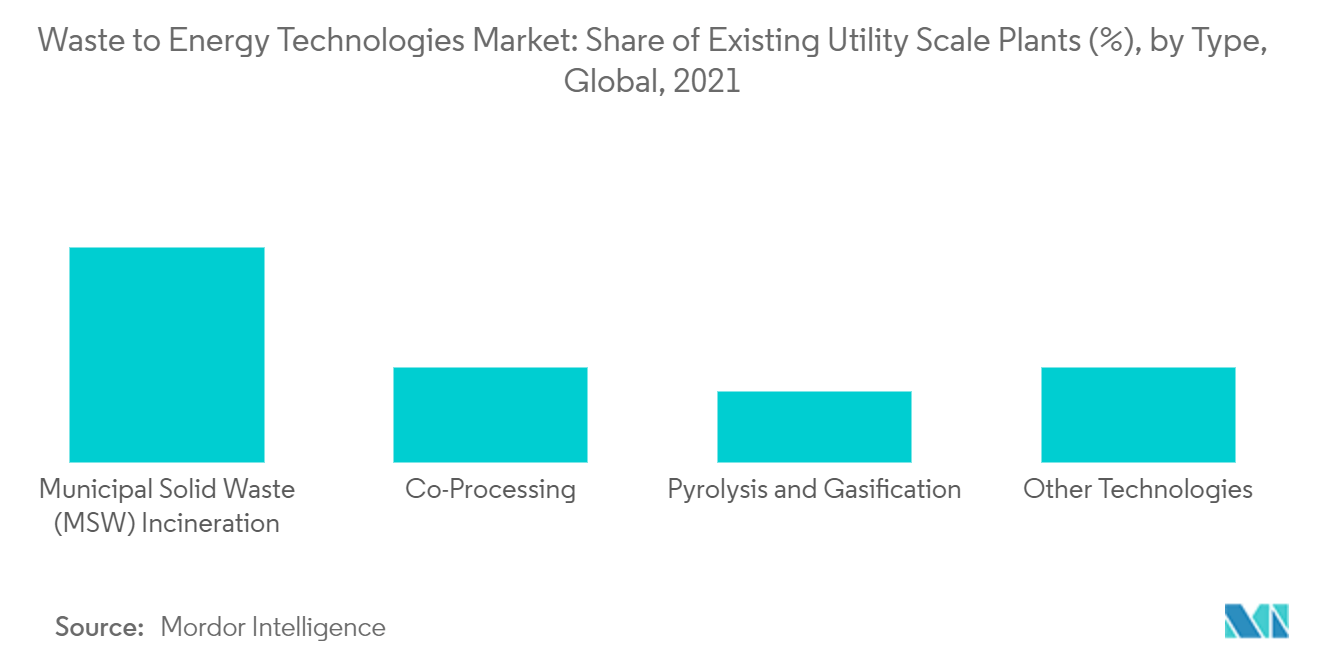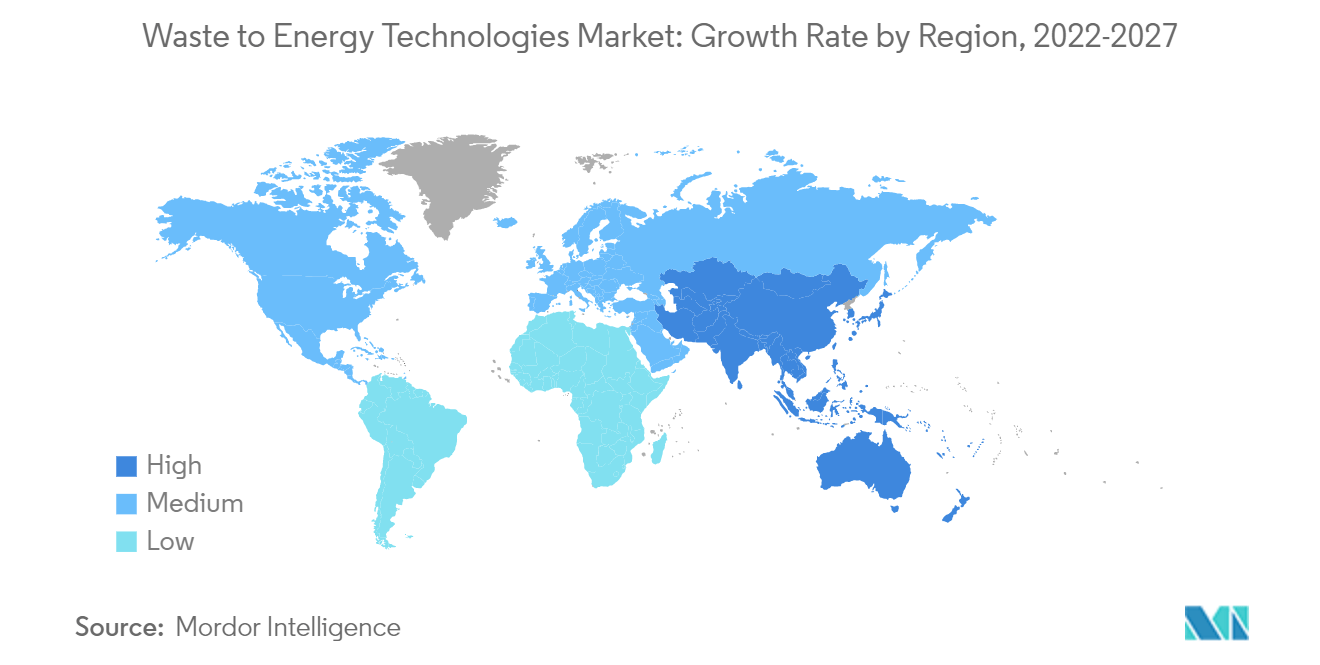Market Trends of Waste-to-Energy Technologies Industry
This section covers the major market trends shaping the Waste-to-Energy Technologies Market according to our research experts:
Municipal Solid Waste Incineration (MSWI) as a Prominent Technology
- During the MSWI process, waste materials are burned inside a specific chamber by raising the temperature to around 850-1450 degrees Celsius, and oxygen is added to have a combustion reaction. A minimum calorific value of the waste is required for the self-combustion of the trash.
- During the process, exhaust gases called flue gases are created, which are cleaned up before exiting the facility. This flue gas contains the heat energy that is utilized to generate electricity or for heating purposes.
- The operation of MSWI is more complex than the operation of a sanitary landfill. It requires well-developed technical and management skills to set and adjust the parameter for the effective operation of the plant.
- With the several advantages of MSWI, the segment is expected to be the prominent technology as compared to other segments. The normal range of net electrical energy that can be produced per ton of waste burnt is 500-600 kWh. Thus, the incineration of around 2,200 ton of waste each day will generate approximately 50 MW of electrical power.
- Therefore, due to such advantages and benefits, municipal solid waste incineration (MSWI) is expected to grow during the forecast period, further driving the waste-to-energy technologies market.

Europe as a Significant Market
- Europe is one of the prominent regions to have developed its waste-to-energy technology. According to the Confederation of European Waste-to-Energy Plants (CEWEP), waste-to-energy plants could produce 189 TWh of useful energy per year by 2035, which would be equivalent to 19.4 billion m³ of natural gas in terms of primary energy.
- Due to cold weather, Sweden and Denmark have several combined heat and power (CHP) waste-to-energy plants, like Aros, Vartan, Herning, etc., which generate more than 100 kilowatt (kW) electricity of energy.
- Europe is estimated to have nearly 330 waste-to-energy plants in the future, with a capacity of around 50 million metric tons annually. The addition of plants is expected to control the rising volume of waste in the region.
- Germany had the most municipal waste energy plants installed capacity in Europe in 2021. In the same year, roughly 1,010 megawatts were deployed around the country. In total, Europe's waste-to-energy capacity was 5.1 gigatons.
- In April 2022, a joint venture initiative with the Aarau-Lenzburg Regional Waste Disposal Association (GEKAL) was established with HZI, the Swiss-Japanese cleantech enterprise. HZI plans to use power from the Buchs Energy from the waste plant to electrolyze hydrogen and oxygen. An alkaline electrolysis method capable of producing 550 Nm3/h of green hydrogen at 350 bar will be employed, meeting both the SAE 2719 and ISO 14687 quality standards for hydrogen fuel.
- Thus, with the increasing installed capacity and development of initiatives in waste-to-energy technologies, Europe is expected to record a high CAGR during the forecast period.


